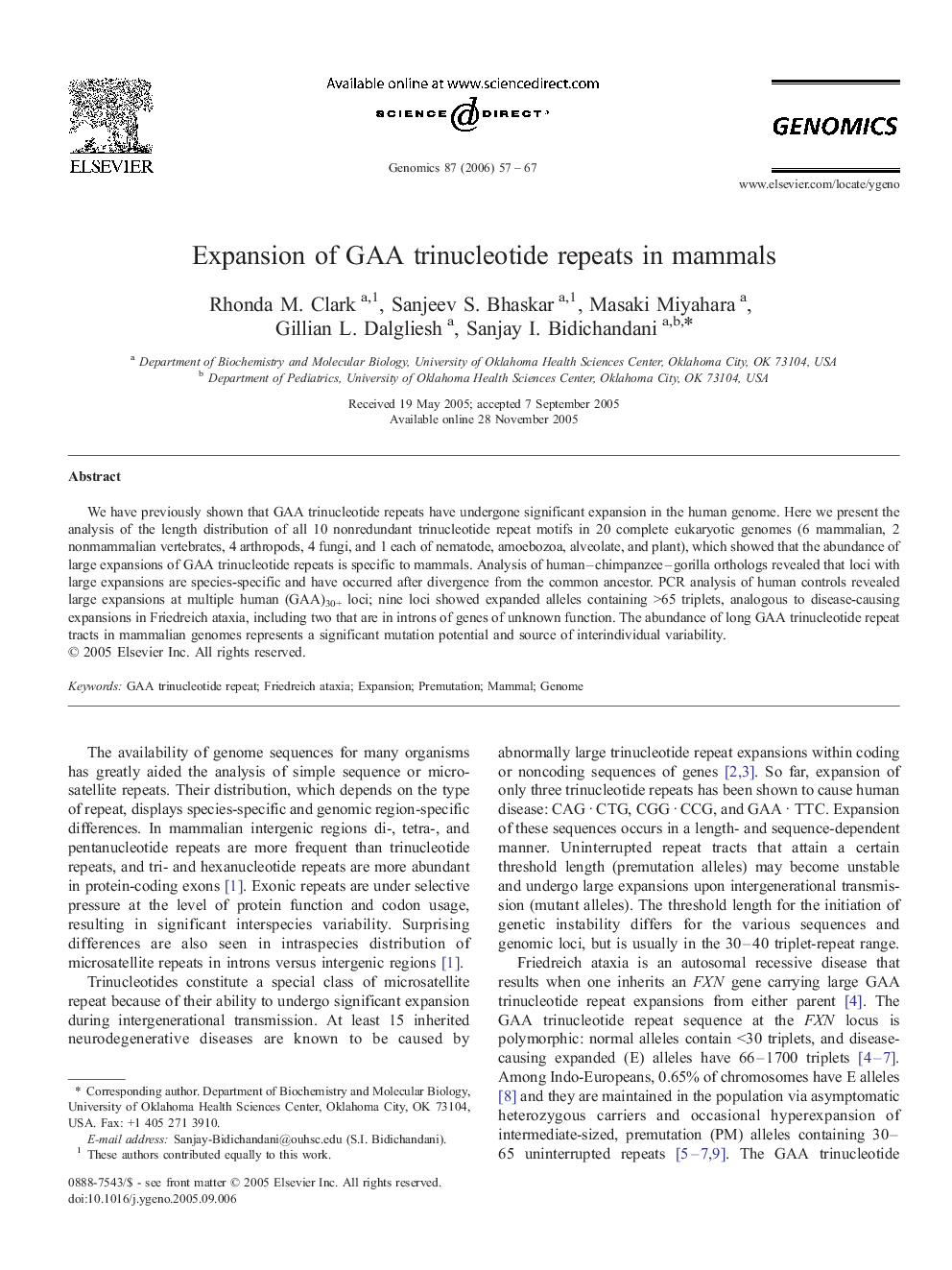| Article ID | Journal | Published Year | Pages | File Type |
|---|---|---|---|---|
| 2821777 | Genomics | 2006 | 11 Pages |
We have previously shown that GAA trinucleotide repeats have undergone significant expansion in the human genome. Here we present the analysis of the length distribution of all 10 nonredundant trinucleotide repeat motifs in 20 complete eukaryotic genomes (6 mammalian, 2 nonmammalian vertebrates, 4 arthropods, 4 fungi, and 1 each of nematode, amoebozoa, alveolate, and plant), which showed that the abundance of large expansions of GAA trinucleotide repeats is specific to mammals. Analysis of human–chimpanzee–gorilla orthologs revealed that loci with large expansions are species-specific and have occurred after divergence from the common ancestor. PCR analysis of human controls revealed large expansions at multiple human (GAA)30+ loci; nine loci showed expanded alleles containing >65 triplets, analogous to disease-causing expansions in Friedreich ataxia, including two that are in introns of genes of unknown function. The abundance of long GAA trinucleotide repeat tracts in mammalian genomes represents a significant mutation potential and source of interindividual variability.
